言語 Language
Junior High School Admission Information for Parents and Children Connected to Foreign Countries: Junior high schools in Japan.
This site provides information for children with foreign connections and their parents/guardians about entering or transferring to junior high schools in Japan. Information on preparation for junior high school enrollment and junior high school life is introduced in multiple languages. It also includes interviews with pupils already attending junior high school in Japan.
It can be difficult for children with foreign connections and their parents/guardians to find the information they need. Therefore, students at Chiba University's College of Liberal Arts and Sciences have created this website. We hope to help reduce the anxiety of children entering junior high school in Japan.
Release Date: February 28, 2023
Table of Contents
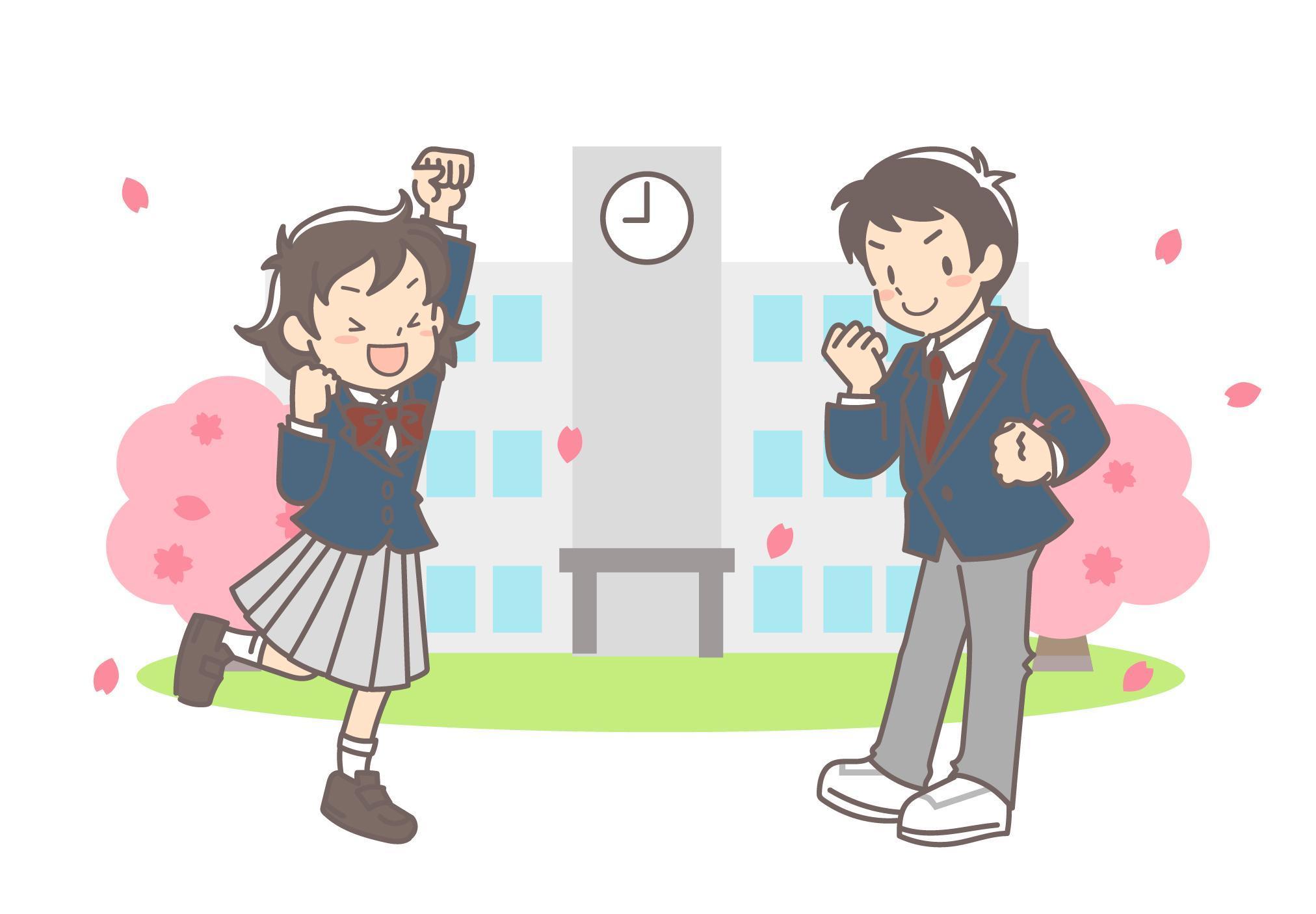 1 Introduction to Japanese SchoolsWhat is a junior high school? How to enroll
1 Introduction to Japanese SchoolsWhat is a junior high school? How to enroll 2 Admission Procedures and Required DocumentsThe flow of Admission and Required Documents
2 Admission Procedures and Required DocumentsThe flow of Admission and Required Documents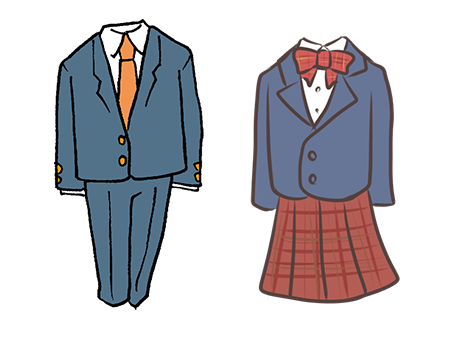 3 What you need to buyWhat to buy, what to wear
3 What you need to buyWhat to buy, what to wear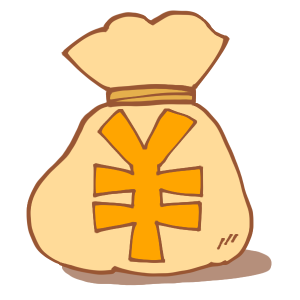 4 ExpensesMoney, preparation for enrollment, and costs for the year
4 ExpensesMoney, preparation for enrollment, and costs for the year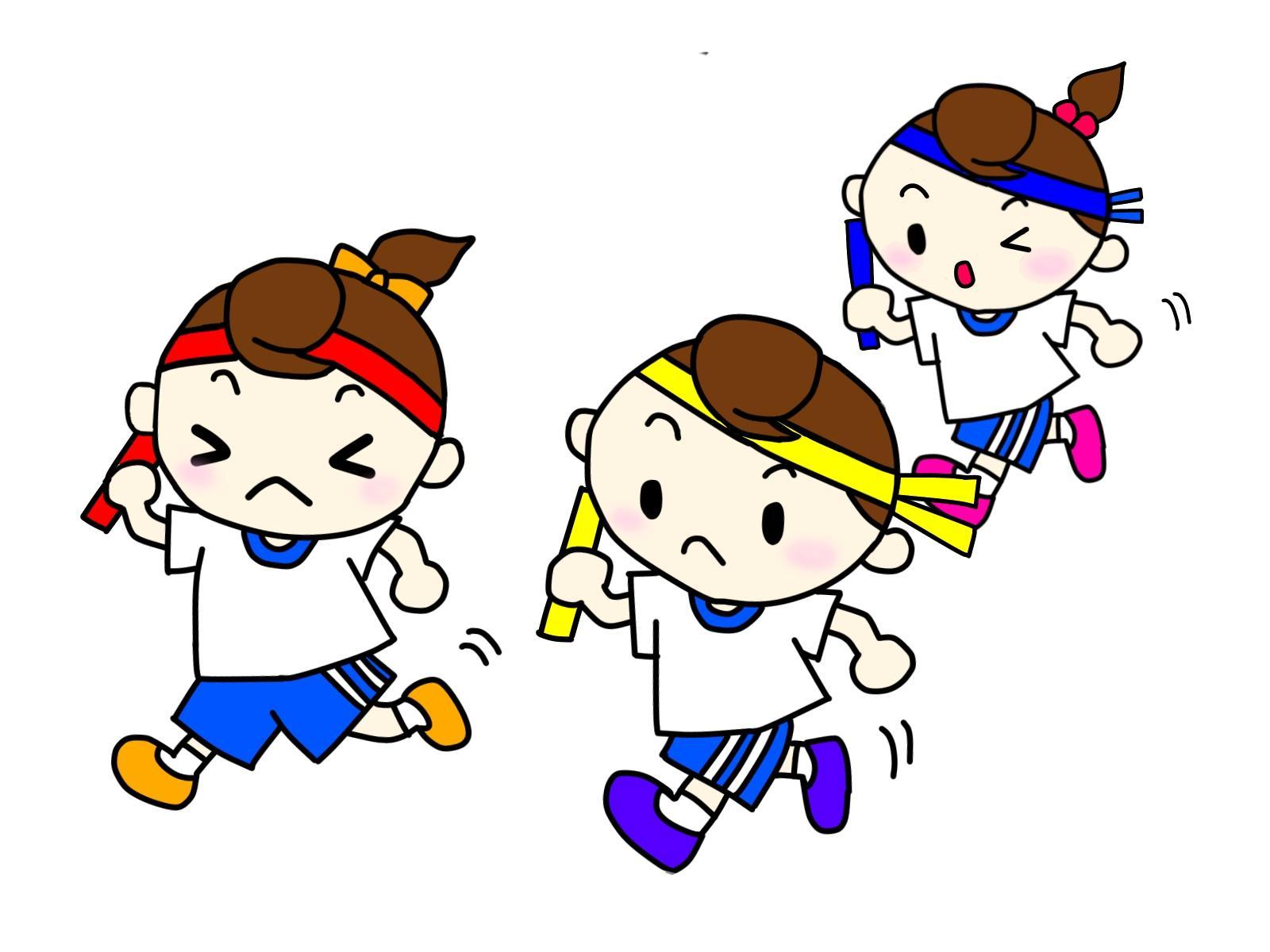 5 A year in junior high schoolField days, cultural festivals, school trips, graduation ceremony
5 A year in junior high schoolField days, cultural festivals, school trips, graduation ceremony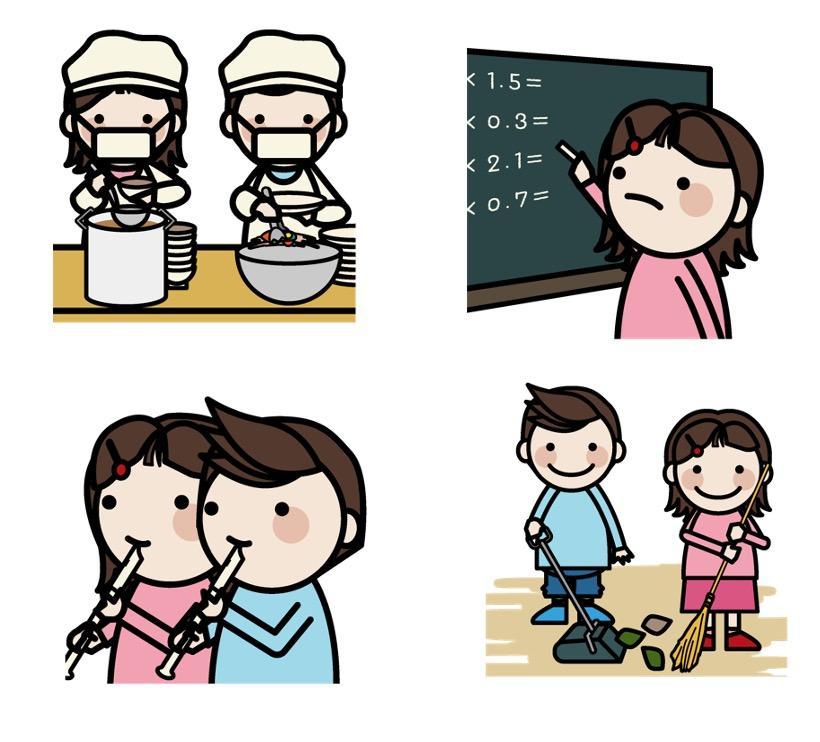 6 A day at junior high schoolCleaning, school lunch, classes, subjects, how to spend recess, toilets
6 A day at junior high schoolCleaning, school lunch, classes, subjects, how to spend recess, toilets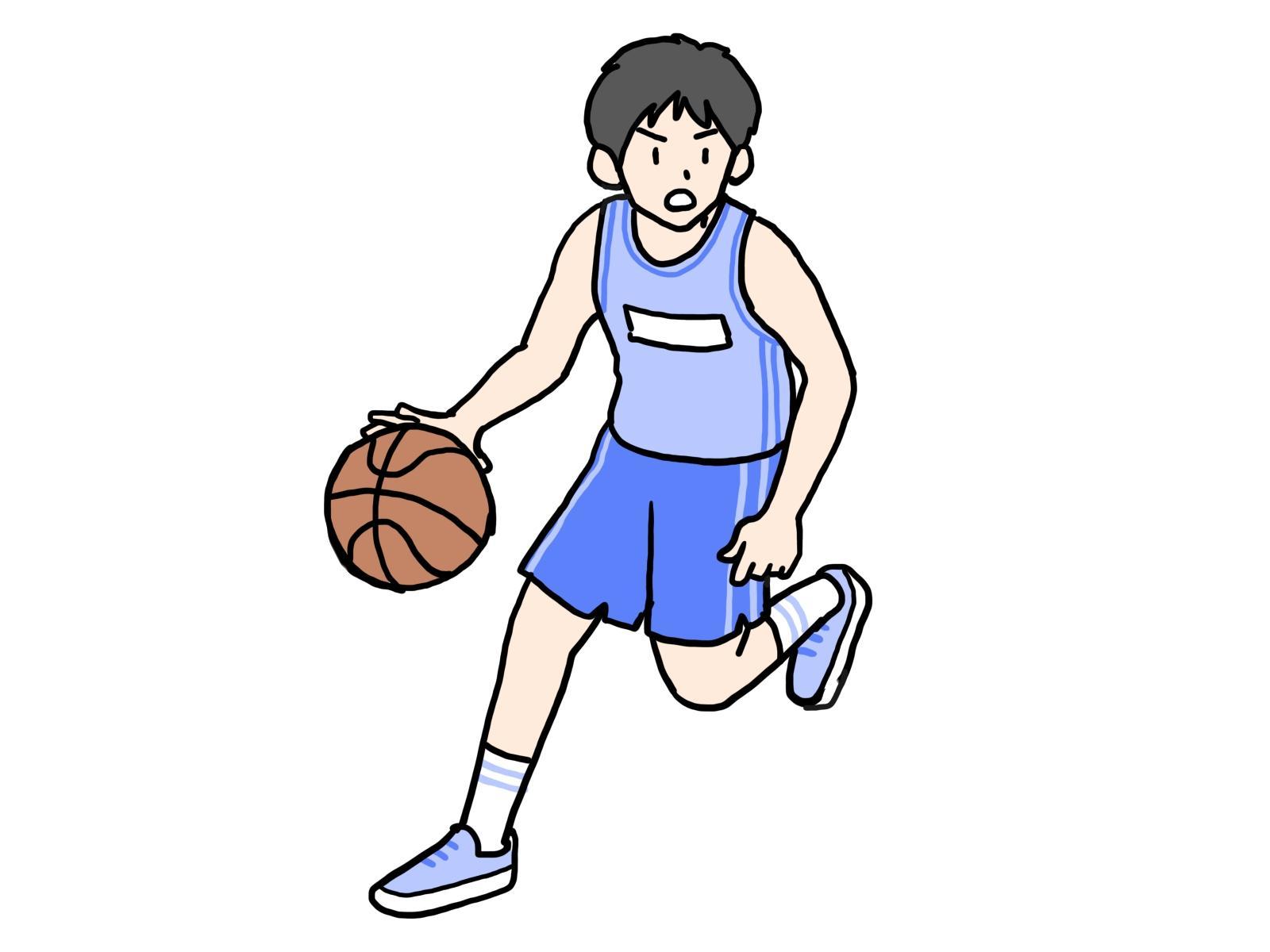 7 Club activitiesClub activities, club fees
7 Club activitiesClub activities, club fees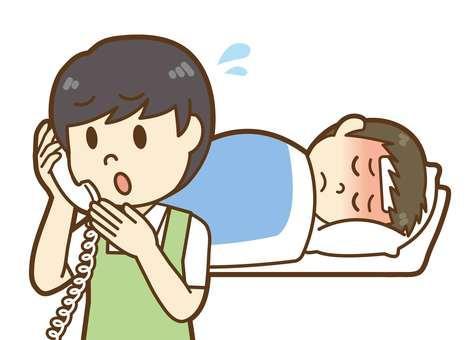 8 Notification of tardiness and absencesMissing school, being late for school, observing classes
8 Notification of tardiness and absencesMissing school, being late for school, observing classes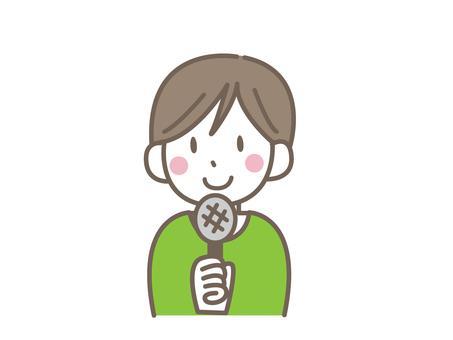 9 Students' voicesPupils’ voices, School life
9 Students' voicesPupils’ voices, School life
1 Introduction to Japanese Schools
Schools in Japan
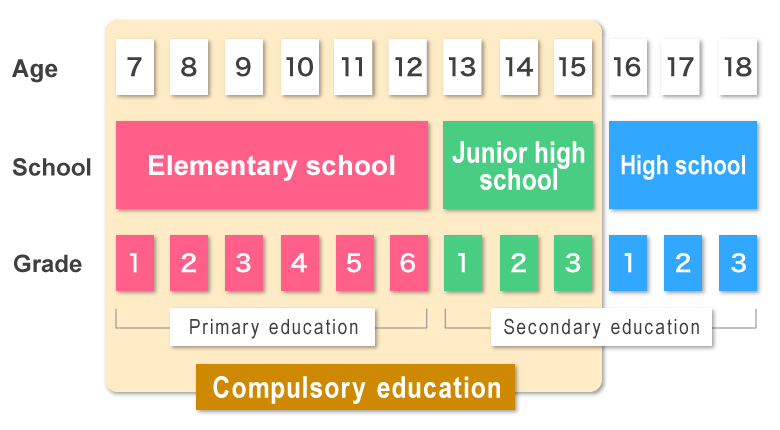
Source: Prepared by the writers
- Schools in Japan include "elementary school", "junior high school", and "high school". There are also "universities" and "vocational schools”. Attending elementary and junior high schools is compulsory. Non-Japanese nationals are not required to attend these schools.
- Elementary school is for six years from the age of 6, and junior high school is for three years from the age of 12.
- In Japan, a school year begins in April and ends in March. Those who come to Japan or move to a new city in the middle of the school year can start at a time other than April.
- 'Nyūgaku' is the enrolment of first-year students starting school in April. 'Tennyūgaku' refers to transferring between schools within Japan. 'Hennyūgaku' means the enrolment of students who were attending school in other countries into Japanese schools.
- For children with disabilities, there are schools for special needs education (elementary department, junior high school department and senior high school department). There are also elementary and junior high schools with special classes for children with special needs, or resource rooms where children with disabilities receive classes when needed depending on their disability, while mainly attending regular classrooms.
“Public Schools" and "Private Schools”
- There are two types of schools: public and private. Public schools are schools established by the state or municipalities. Private schools are those set up by people other than the state or municipalities.
- Public elementary and junior high schools do not charge tuition fees, but they do charge fees for school lunches and supplimentary teaching materials. Expenses
- Private schools charge tuition fees.
How do I enroll?
- Families with children of Japanese nationality will receive an enrollment notice from the municipal office when they reach the age to enroll.
- Families with children who do not have Japanese citizenship may not receive such information. In such cases, you will need to apply for admission by yourself at the municipal office. Admission Procedures and Required Documents
- Most public elementary and junior high schools do not require an entrance examination. The school is determined by the area where you live.
- To enter a high school, you must take an entrance examination.
Others
- Those who are 16 years old or older cannot enter junior high school; however, they can enter "evening junior high school”. Those who did not graduate from junior high school or did not learn enough in their daytime junior high school should consult the municipal office.
Sources
- 東京都多文化共生ポータルサイト「日本の学校制度」
- 文部科学省「外国人生徒のための就学ガイドブック」
- 国立障害者リハビリテーションセンター「発達障害に関する外国人保護者向けパンフレット」
Do you have concerns about your child’s development? ~For parents raising children in Japan~
2 Admission Procedures and Required Documents
Admission Procedures
- Complete "Alien Registration" procedures at the municipal office.
- Let the municipal office know that you wish to enroll in a Japanese school. There, you will be given an "Application Form for Enrollment of Foreign Children" and a "School Guide." Please fill out the application form and submit it to the municipal board of education.
- The municipal board of education will send you a "Letter of Admission for Foreign Children." Check the name and location of the designated school.
- Go to the designated school. Talk with the head teacher there.
※In Japan, school grades are determined by age. The grade in Japan may not be the same as the grade in your home country.
Required Documents
When you go to the designated school, please take the following documents:
- School-related documents obtained in your previous country of residence, such as enrollment certificates and transcripts
- Letter of Admission for Foreign Children
At the school, you will need to submit the following information:
- Name of the applicant and their family
- Date of birth
- Current address
- Family composition
- Method of contact (emergency, workplace, interpreter, etc.)
- Method of going to and from school
- The expected period of stay
- Education received in the previous country of residence, grade in the last country of residence (years of schooling)
- Health status
- Japanese language use by the applicant and family members
Source
3 What you need to buy
Examples of what to buy
- Here is one example. Each school has different rules and schools often have dress codes. Please check with your school before buying anything.
- In Japanese schools, everyone uses the same items, so you should write your name on your belongings.
(1)Clothing, etc.
| School uniform | 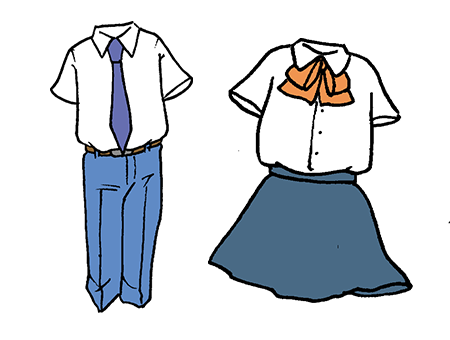 Summer uniform |
|
|---|---|---|
 Winter uniform |
||
| Bags | 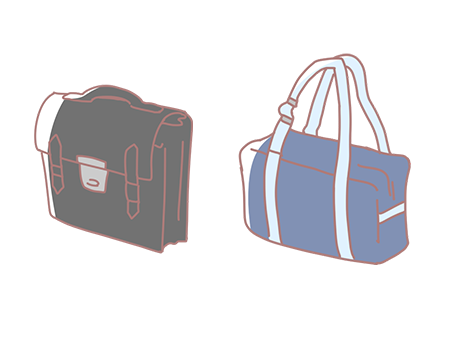 |
|
| Gym uniform | 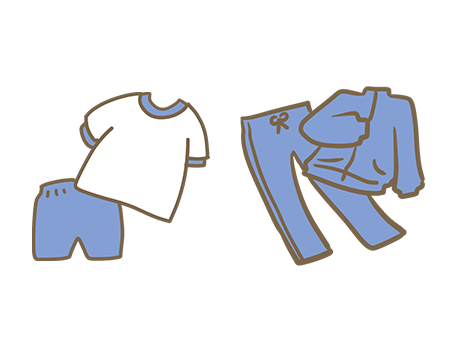 |
|
| Shoes | 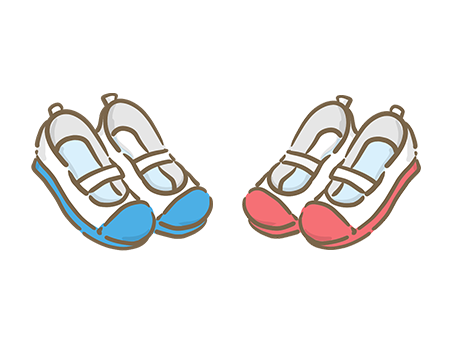 |
|
| Socks | 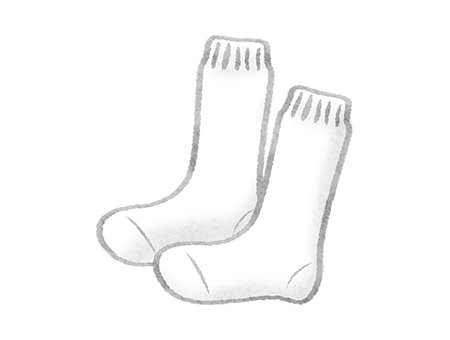 |
|
(2)Stationery items
| Pencil case |
|
|
|---|---|---|
| Pencil, mechanical pencil, red pen |
|
|
| Eraser |
|
|
| Ruler |
|
|
| Plastic board |  |
|
| Notebooks |
|
(3)School lunch
The items required differ depending on the region and school.
| Chopsticks |
|
|---|---|
| Mask |
|
(4)Others
| Bicycle |
|
|---|---|
| Helmet |
|
| Dustcloth |
|
(5)Things you are not allowed to bring to school
There are items you are not allowed to bring to school.
【Examples】
- Cell phones and smartphones
- Accessories (rings, necklaces, etc.)
- Sweets (gum, candy, etc.)
- Game consoles
Source
4 Expenses
The following is an overview of the costs of enrolling in a public junior high school and yearly costs.
Expenses to enter a school (example)
| Item | Average amount (yen) |
|---|---|
| School uniform | 60,000 |
| Gym uniform | 15,000 |
| Gym shoes, bags, etc. | 10,000 |
- There may be costs for swimsuits and judo uniforms used in P.E. classes, and equipment for club activities.
- It may be possible to buy second-hand items at a reasonable price. If it is difficult to buy all of them at once, please consult the school or the municipal office.
Expenses for each year (example)
| Item | Average amount (yen) |
|---|---|
| Tuition fees, textbooks | 0 |
| School lunch fees | 43,000 |
| Supplementary teaching materials and school supplies | 25,000 |
| PTA dues, etc. | 17,000 |
| Field trip and school trip expenses | 25,000 |
| Club activity fees | 30,000 |
- PTA dues are used for parents' activities.
In Japan, there is a support system for families who have difficulty paying school fees. Please consult the school or municipal office.
Sources
5 A year in junior high school
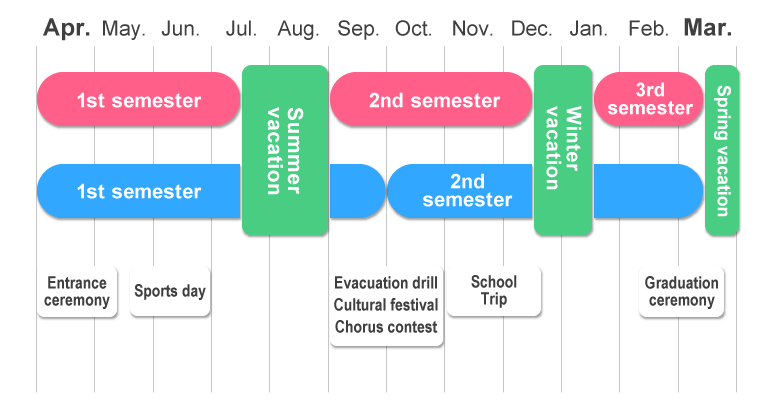
Source: prepared by the writers
In Japanese junior high schools, a school year begins in April and ends in March of the following year.
A school year is divided into two or three "terms”.
The way "terms" are divided differs from school to school.
The type and content of events also differ from school to school.
Main events
- Entrance ceremony (April)
Class members are announced. Students will stay in the same classes with the same classmates for one year. - Sports day
This is held in spring or fall. Students compete in sports and score points for their team. Singing and dancing performances are also held. There is a cheering competition to support the teams. - Summer vacation (August)
This is a long vacation of about 30 days. Homework is given. - Cultural Festival
Students take the lead in decorating classrooms and performing dances and plays. - Chorus contest
Classes compete against each other in a singing contest (chorus contest). - School Trip
Students in the third grade often go on school trips. Overnight stays are common. Students usually visit historical places and get to know their friends better. Destinations and costs vary from school to school. - Graduation ceremony (March)
Third-year students graduate, and first- and second-year students celebrate their graduation with a chorus. Most students continue studying in high schools. - Closing ceremony (March)
This is the last day of the school year. Grade reports are distributed. A day at junior high school - Spring Vacation
Students have a two-week break from the closing ceremony to the first school day of April.
Other Events
- Physical Check-ups
Students are checked for height, weight, and eyesight. - Tests
Tests (examinations) are held four or five times a year. Tests are important because they determine grades. The scope of the test will be announced about a week before the test. A day at junior high school - Class Observations
Parents come to observe classes at the school. - Personal interviews
Parents come to the school to talk with the homeroom teacher. This is an opportunity to discuss any concerns they may have. Parents can talk about grades, career paths, and everyday issues. - Evacuation Drills
Practice how to evacuate in case of fire or earthquake.
Sources
6 A day at junior high school
A day at junior high school
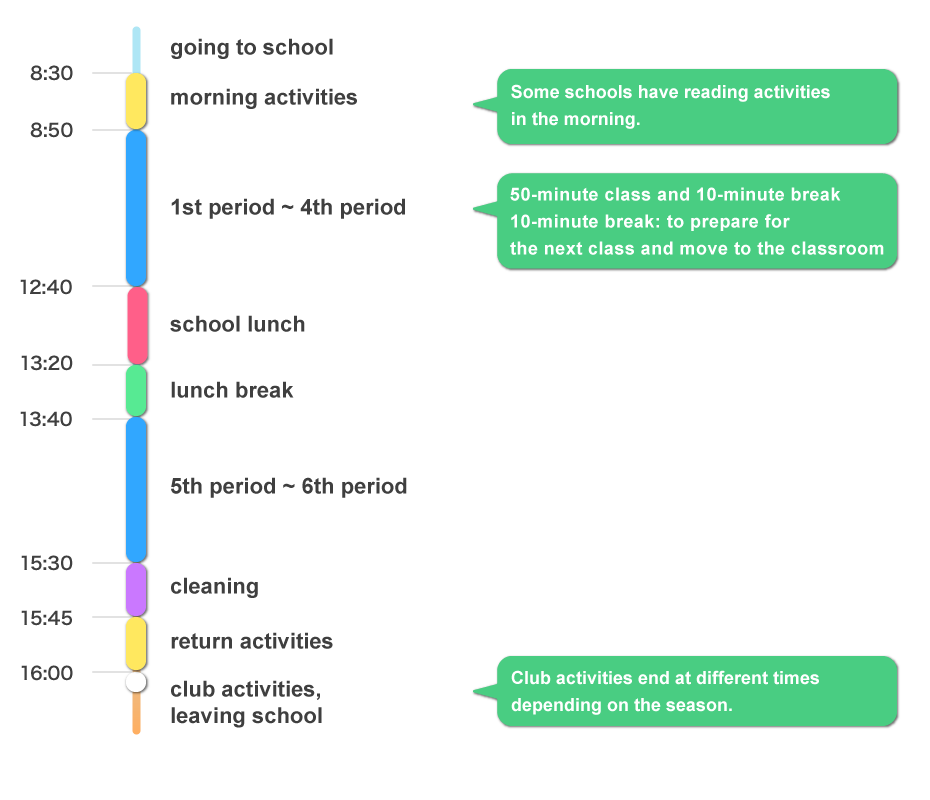
Sources:日常の疑問を解決「公立中学校の授業時間って何時まで?時間割は?」
Cleaning
 cleaning clothIn Japanese schools, students clean the school after lunch and after school. Cleaning cloths (zokin) are used for cleaning. Each student brings their own zokin to school at the beginning of each term.
cleaning clothIn Japanese schools, students clean the school after lunch and after school. Cleaning cloths (zokin) are used for cleaning. Each student brings their own zokin to school at the beginning of each term.
School Lunch
- School lunch is eaten in the classroom. Public junior high schools do not have cafeterias.
- The "lunch duty" pupils wear a white coat and apron and a mask and distribute lunches to their classmates. On weekends, they take their uniforms back home to wash and bring them back to school on Monday mornings to pass on to the next “lunch duty” group.
- Some days there are no school lunches. The school will inform you in advance that you need to bring your own lunch.
- If there is something you cannot eat due to allergies or religious reasons, you must consult your homeroom teacher.
- Some schools do not provide school lunches and require students to bring their own lunch.
School subjects
- In junior high school, students study nine subjects. The teacher changes for each subject.
- What to bring will depend on the subject and content. Check the daily announcements carefully and prepare what you need the day before. Please ask your teacher if you have any questions about where or when to buy something.
- For some subjects, you will be moved from one classroom to another. During recess, move to your assigned classroom with the items you need in class.
| Subject name | What you will study, and what you need to bring |
|---|---|
| Japanese |
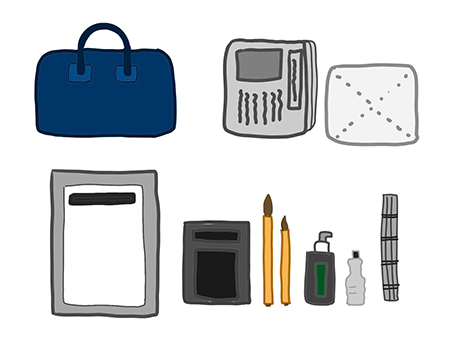 Shuji (calligraphy) set Shuji (calligraphy) set |
| Math |
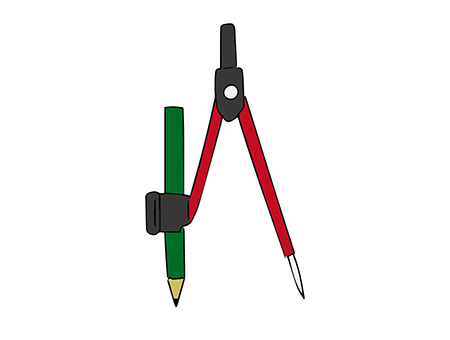 Compass Compass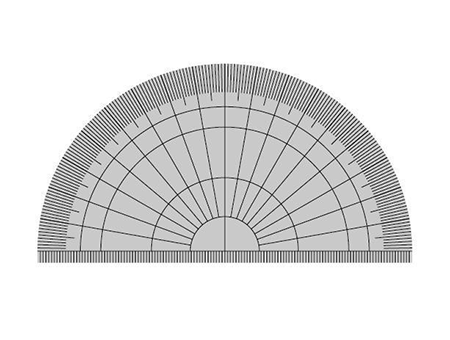 Protractor Protractor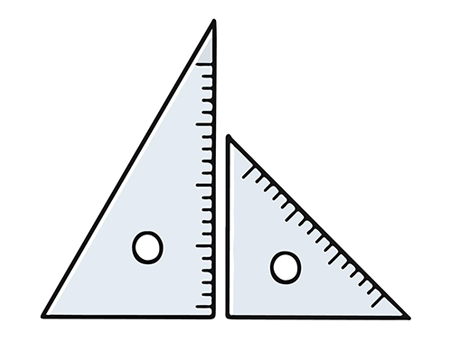 Triangular ruler Triangular ruler |
| Social Studies |
|
| Science |
|
| Foreign Language (English) |
|
| Music |
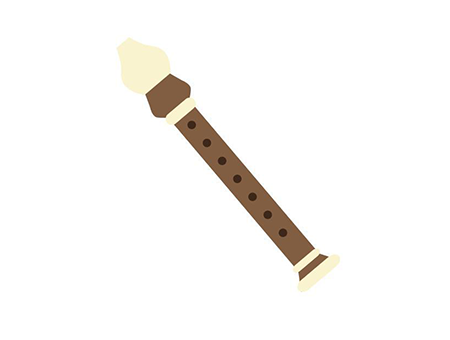 Recorder Recorder |
| Art |
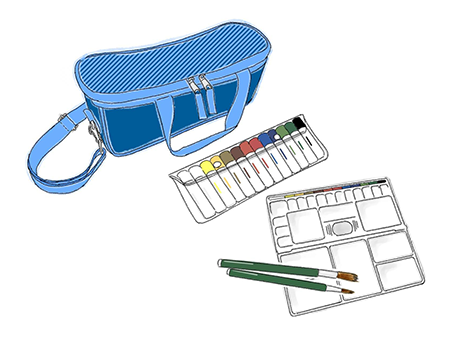 Paint set Paint set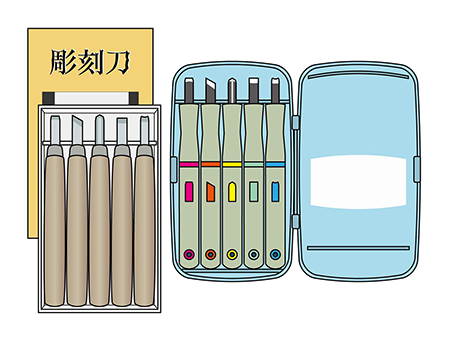 Engraving knives Engraving knives |
| Health and Physical Education |
 Gym uniform Gym uniform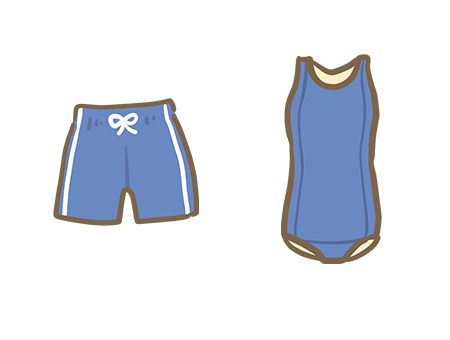 Swimsuit Swimsuit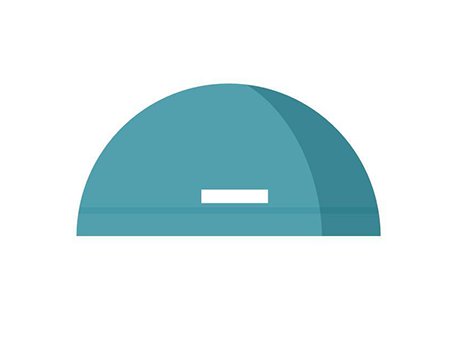 Swimming cap Swimming cap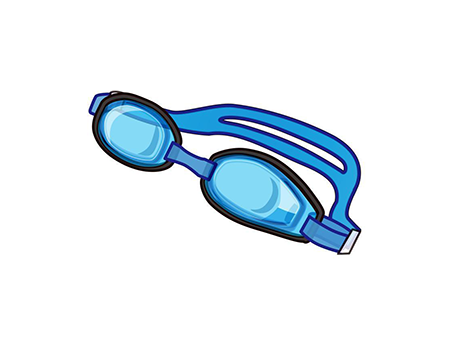 Goggles Goggles |
| Home Economics |
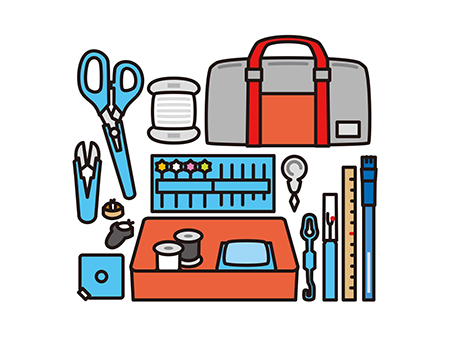 Sewing utensils Sewing utensils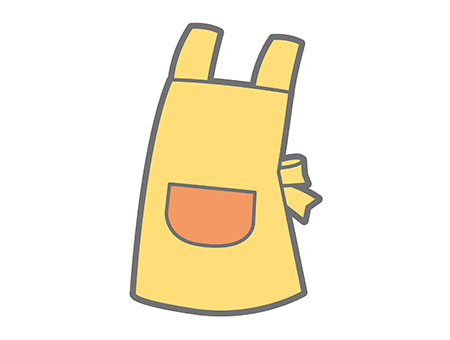 Apron Apron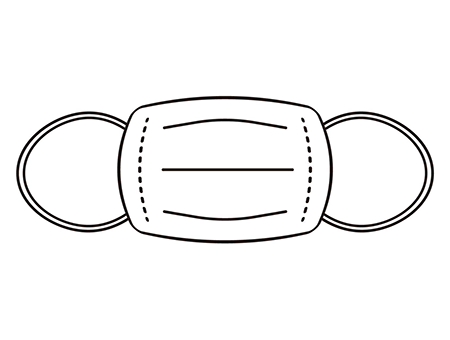 Mask Mask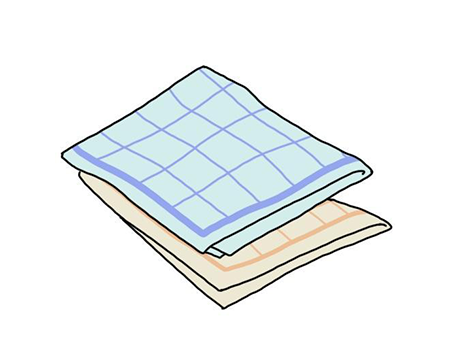 Cloth rags Cloth rags |
| Technical arts |
|
Grades and Periodic Exams
- Periodic exams (midterm, final, etc.) are given four or five times a year. Students plan and prepare for them. There is also an academic proficiency test held several times a year. The results of the proficiency tests are used as a reference when deciding which high schools to apply for. Tests are extremely important, so do not miss them.
- At the end of each semester, grade reports will be distributed. Grades are based on (1) regular exams, (2) daily attitude in class, (3) small tests, and (4) homework assignments. Grades are also important for high school admission.
Morning Activities (including homeroom)
- Before classes, attendance is checked, and homeroom teachers make necessary announcements to students. Afterwards, some schools have short activities such as reading, drills, speeches, etc. There may be a school assembly.
Recess
- The 10-minute recess between two classes in junior high school is not a time for playing. It is a time to go to the restroom, prepare for class, and move to the next classroom. Students have to be in their seats before the next class begins.
- The toilets in Japanese junior high schools may look different from the toilets at home.
- In Japanese toilets, used toilet paper must be flushed down the toilet. The girls' restrooms have trash cans for used sanitary products. Do not flush sanitary products down the toilet.
Activities before going home (including homeroom)
- Students listen to the teacher's report and check the next day's timetable. The next day's schedule and things to bring are often written on the blackboard, so you should write them in your notebook.
Sources
7 Club Activities
Club Activities
After school and on holidays, club members gather together and practice with the teacher in charge. In some schools, joining a club is mandatory, but generally pupils can join the club of their choice. Pupils can interact with pupils in the same grade and those in different grades. You should join one after confirming the necessary fees and equipment and discussing the matter with your parents.
Types of club activities
There are various club activities, such as music, sports, etc. The types of club activities vary from school to school. Here are some examples.
Examples of sports clubs
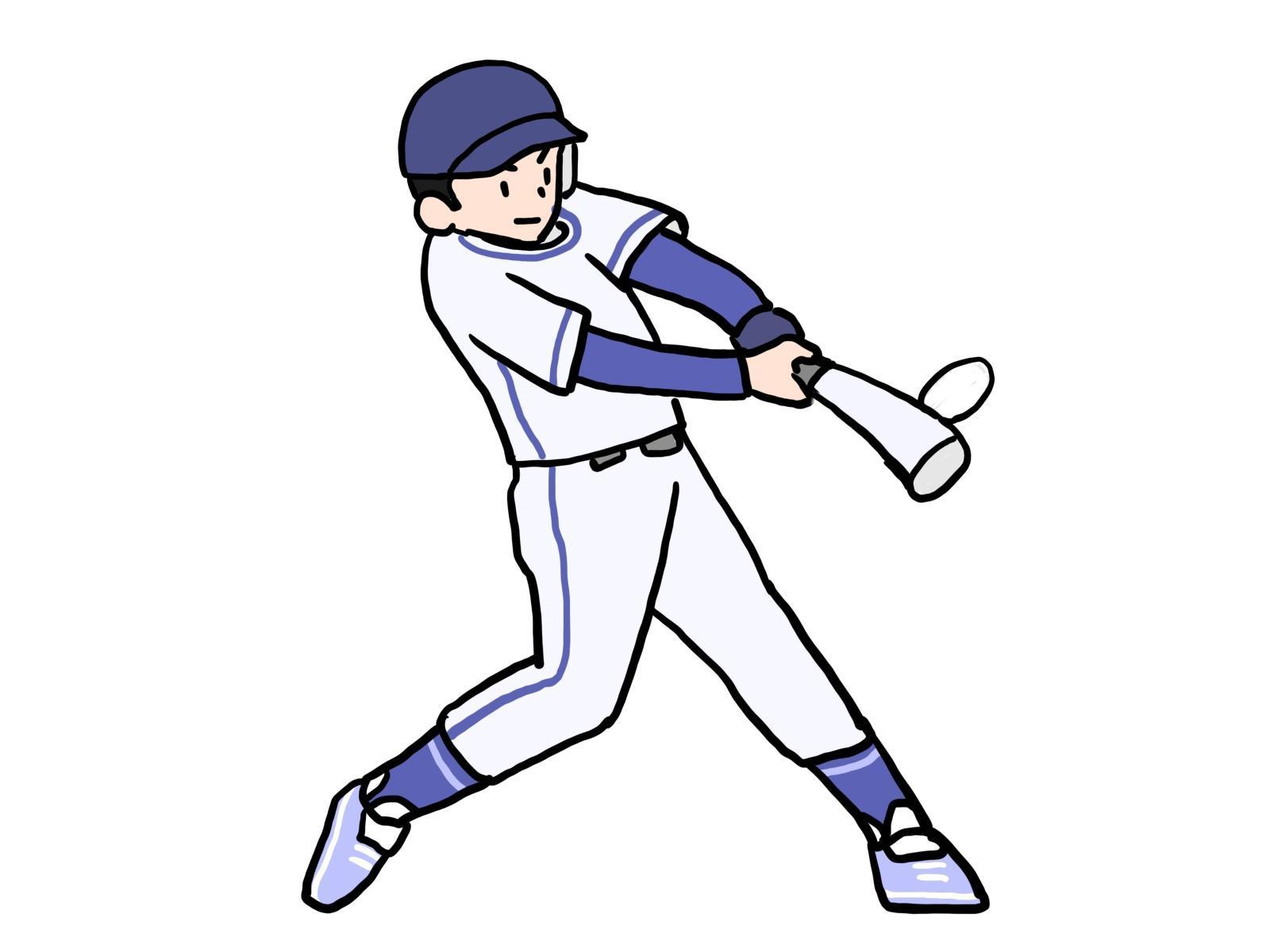 Baseball club
Baseball club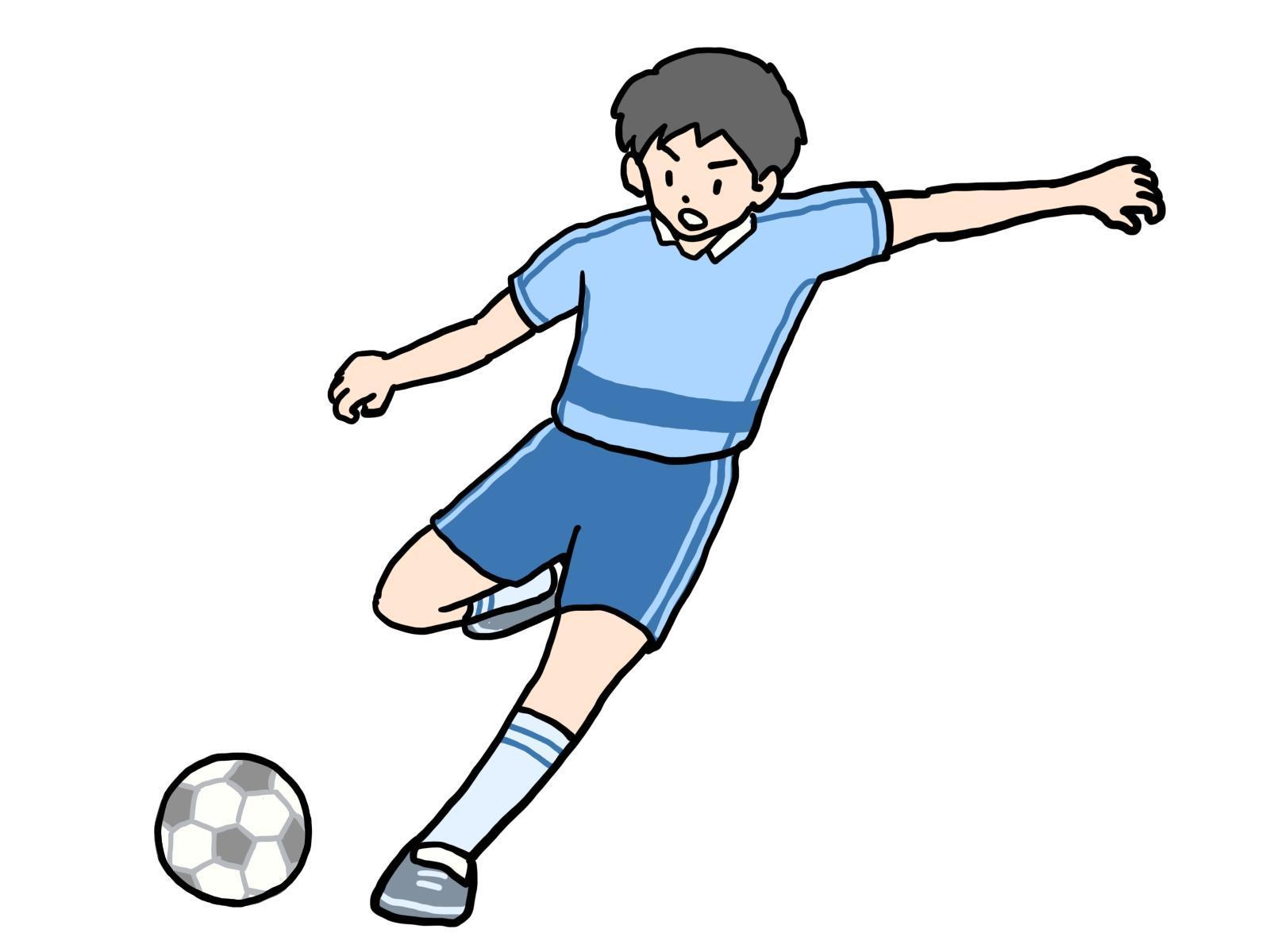 Soccer Club
Soccer Club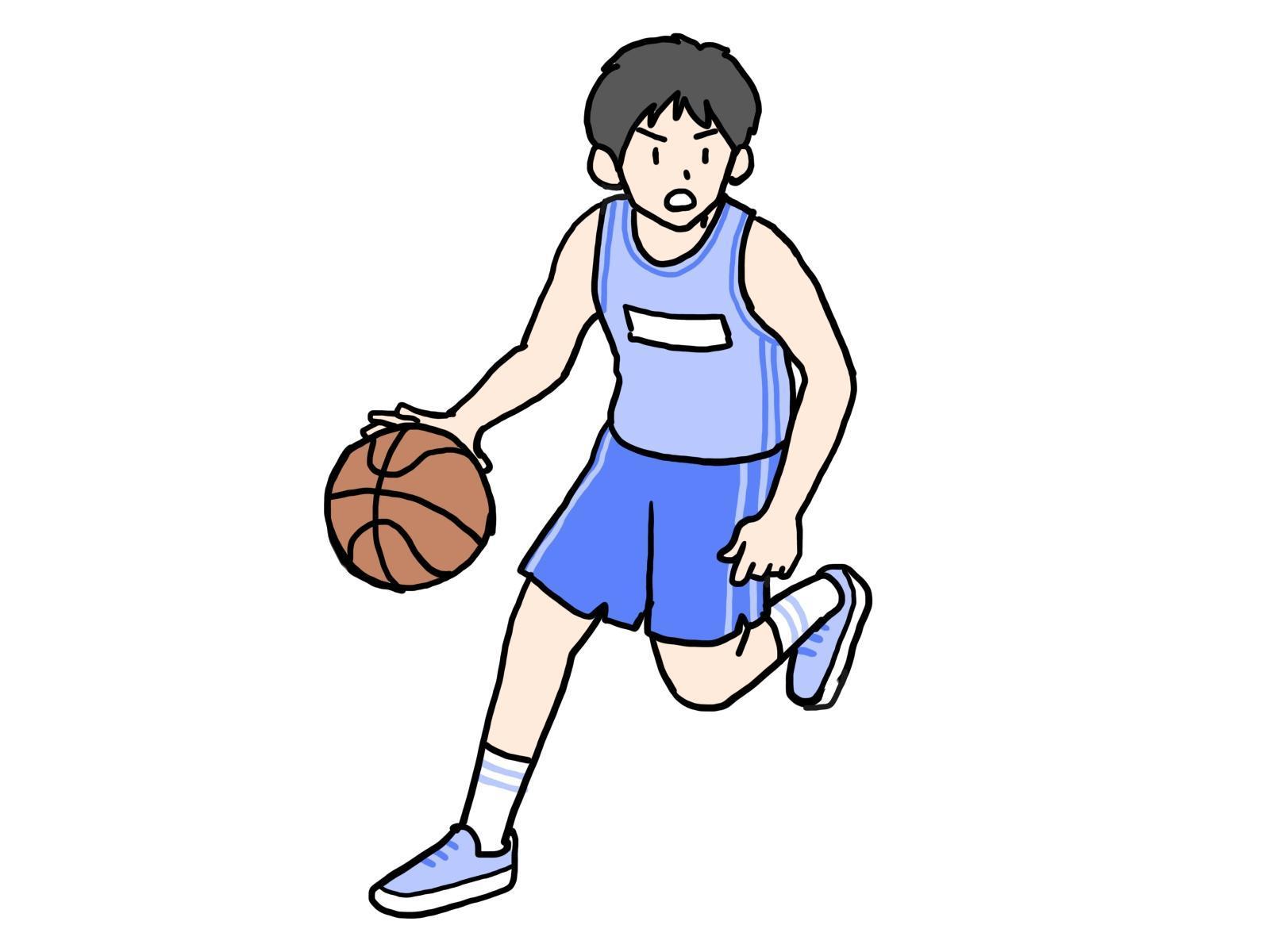 Basketball Club
Basketball Club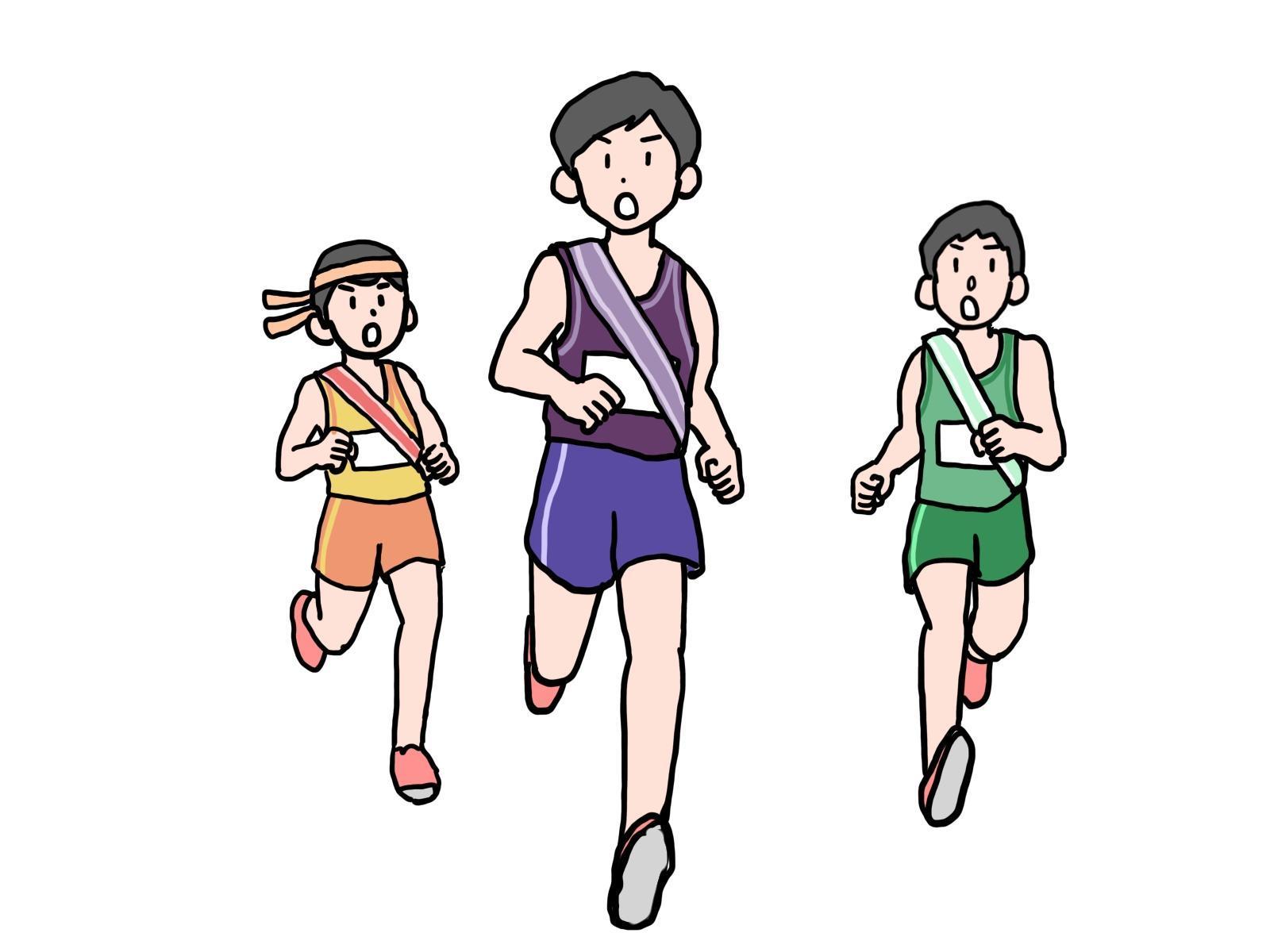 Track & Field Club
Track & Field Club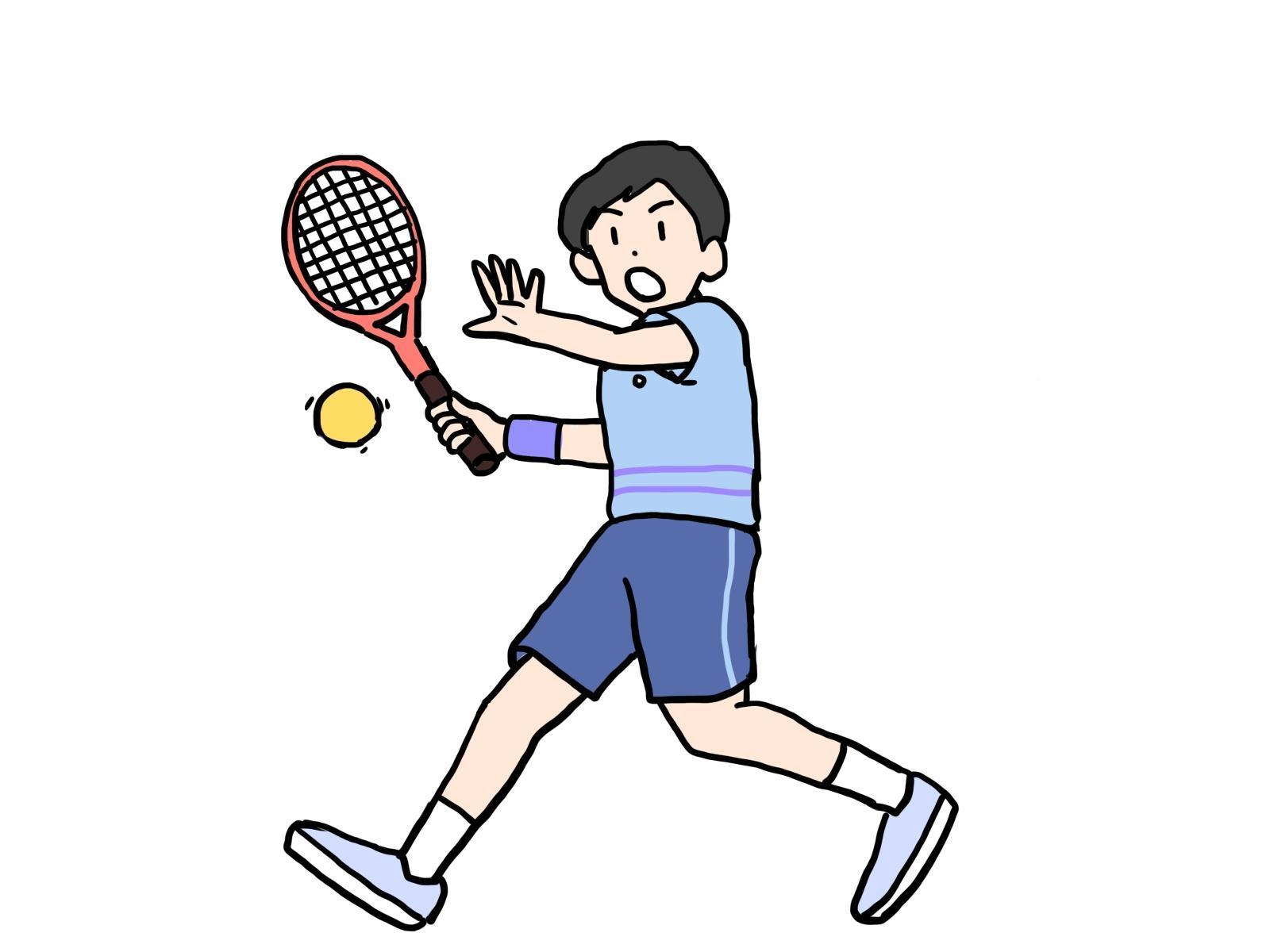 Tennis Club
Tennis Club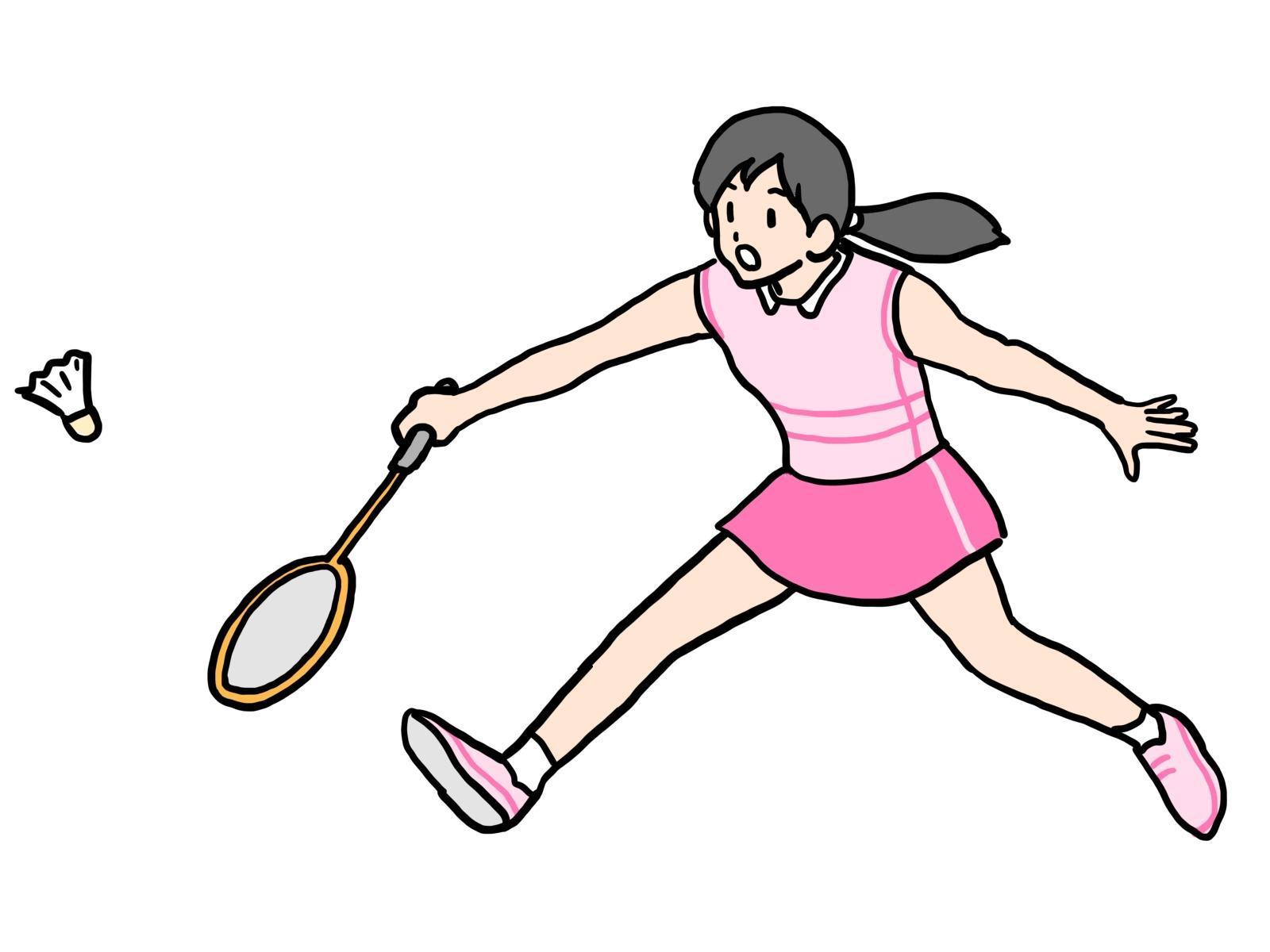 Badminton Club
Badminton ClubExamples of Cultural Clubs
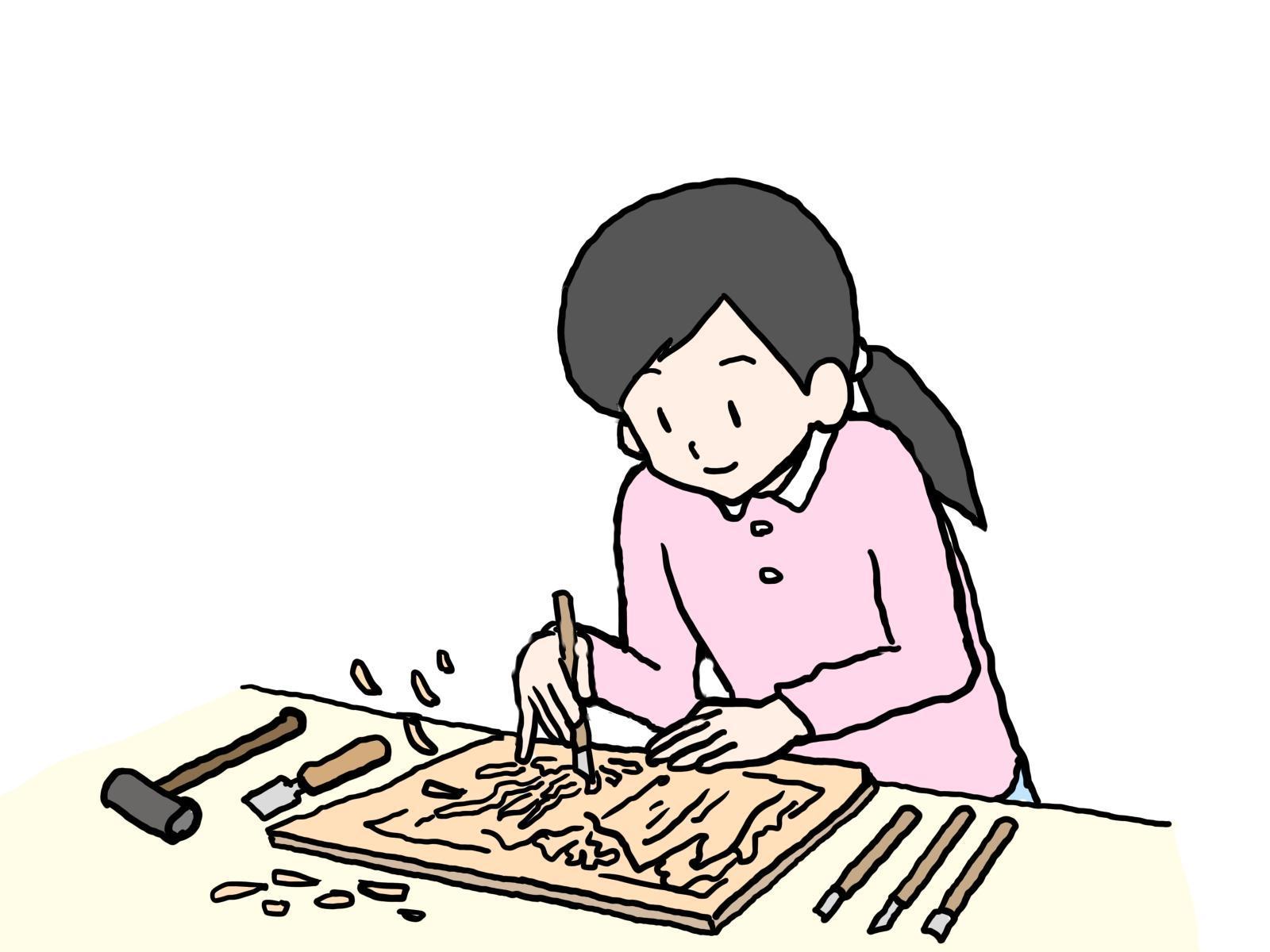 Art Club
Art Club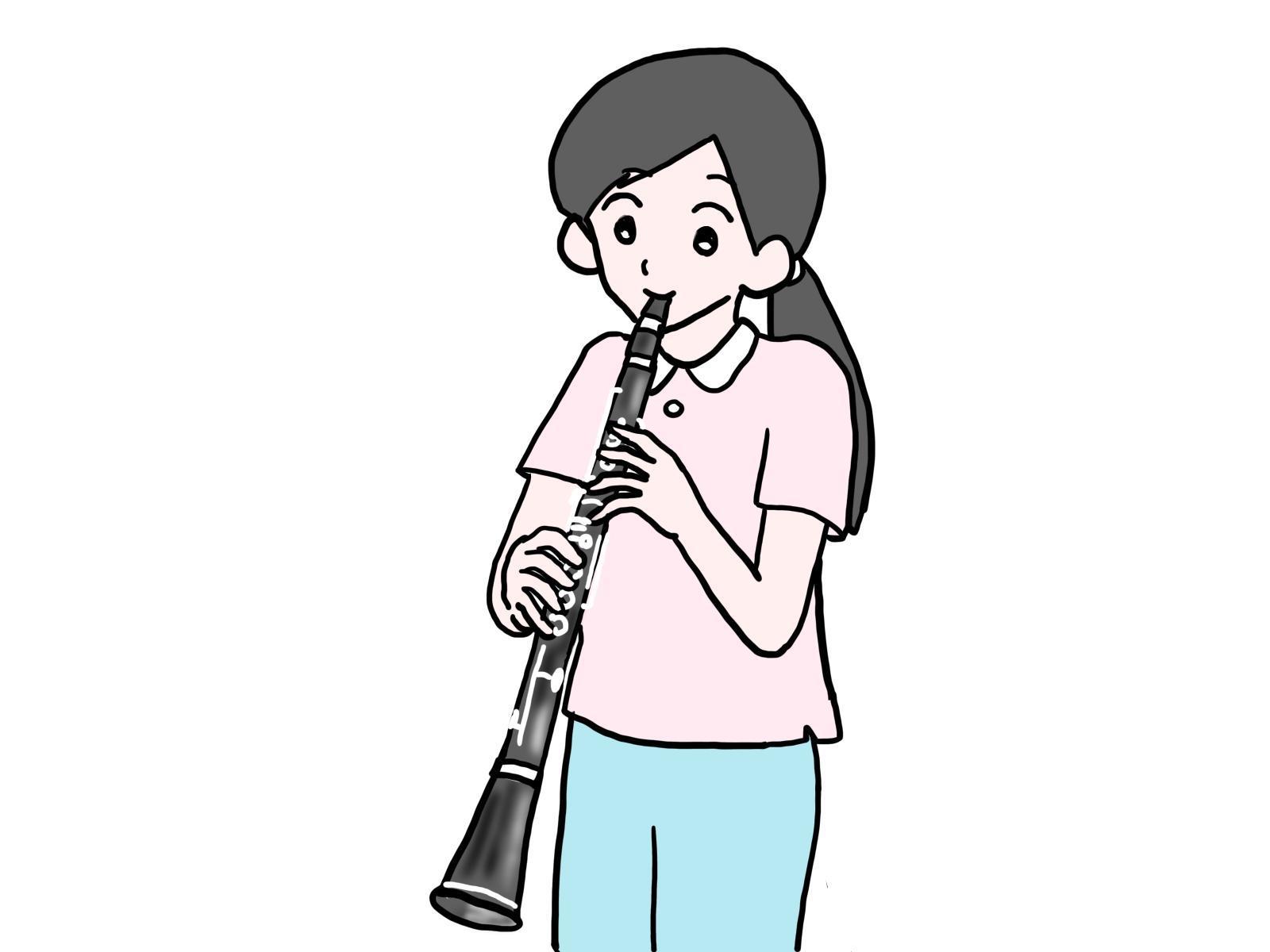 Brass Band Club
Brass Band ClubFees
Club fees differ from club to club. In some cases, students buy their own equipment. In many cases, brass band instruments are borrowed from the school. Please check before joining the club.
Club Activity Days
Most activities are held after school but sometimes on holidays or in the morning before school. During summer and winter vacations, the club sometimes stays somewhere overnight for training camps and tournaments.
Source
8 Notification of tardiness or absence
Methods of contacting the school vary from school to school, such as by phone or a particular smartphone application.
1 In case of absence or late arrival
- Whenever a student will be absent or late, the school must be notified. In the morning, the parent/guardian should contact the school.
- In Japan, students are expected to attend school unless they are sick or under unavoidable circumstances.
2 In case of leaving school early
- If you have to leave early for some reasons, you must also notify the school.
- If a student becomes ill at school, the school will contact the parent/guardian. The parent/guardian may need to pick up the child depending on the student's physical condition.
3 Observation of Physical Education
- If a child has a cold, injury, or other reason, they will be allowed to observe P.E. class instead of participating.
- The school will notify the teacher if this is necessary.
Sources
9 Students' voices
We interviewed six students with foreign connections who attend Japanese junior high schools about their school life. All are of the same nationality, and most had been in Japan for less than a year.
How did you get here? / Language
Q. Why did you come to Japan?
- My father came to Japan 20 years ago. I arrived three months ago.
- My father worked in Japan over 30 years ago and returned to Japan two years ago.
- A year ago, the rest of my family was invited to come to Japan.
My father was working in Japan, but we all had to move here. I was sad to leave my country, but we plan to live in Japan from now on.
Q. Did you have any problems or doubts when you entered the school?
- No, not really. My father knew the school's rules and what to bring, and he prepared for me.
- My parents prepared for my school entrance, so I didn't have any particular trouble.
Information
In the case of City A, a staff member from the same country will be present at the school entrance briefing as an interpreter so that the parents can seek detailed explanations in their native language. The timing and method of the entrance orientation differ from region to region and school to school. If you have any questions, please consult the municipal office.
Q. What language do you always use or speak?
- I speak my mother tongue. I also speak Japanese and a little English.
- I speak English, my native language, and another language from my country. I also speak a little Japanese and a little Chinese, but my father speaks all five languages.
- In my country, I learned English, my native language, and another language from my country. However, it was difficult for me to learn the other language from my home country. I use my native language when talking to friends and family.
- Science and math classes were taught in English, and social studies were taught in English and my native language.
Information
In Japanese public schools, all subjects are taught in Japanese. English is studied as a subject. There are no subjects that can be learned in English.
About school life
Q. What do you enjoy about school life?
- Studying Japanese. I like English, P.E., art and math, but not music.
- I enjoy using tablet devices in Japanese class. It isn't easy to read kanji without furigana.
- I enjoy Japanese class. I have Japanese friends, and I have no particular problems in school life.
- I am good at English. I also like art and music. I wouldn't say I like physical education. In my home country, we only read books and didn't play sports, so I wouldn't say I liked physical education.
Information
Schools in City A that have many students with foreign connections offer classes where students can study Japanese in a separate classroom on a priority basis. In such cases, the students still take P.E., music, art, and English in the same classroom as other students.
Do you eat school lunch? Or do you bring your own lunch?
- Yes, I bring my own lunch. I go to prayers on Fridays at noon.
- I bring my own lunch. In my home country, everyone had packed lunches.
- I don't eat school lunch or bento. In my home country, we eat lunch at 15:00-16:00, so noon is a little early.
Information
Most public junior high schools in Japan offer school lunches. If there is something you cannot eat due to allergy or religious reasons, please consult the school.
Q. How do you learn Japanese?
- I am learning Japanese only in class at school.
- My father speaks Japanese, so he sometimes teaches me.
- I study in class and by myself. I go to a cram school near the station and my friends also go there.
Information
You may be able to study at a "local Japanese language class." Please consult your school or local government office.
Q. Have you ever had any difficulties speaking Japanese?
- No, not particularly. I use Pocket Talk to talk with my teacher. When I talk with my friends from the same country, I speak in my native language.
- Kanji is difficult for me. I can read them, but I can't write them yet.
- I once had trouble in a store because I could not get my meanings across in Japanese.
Q. How do you go to school?
- I go to school by bicycle. It isn't easy because there are many hills. It takes 15 minutes from my house to the junior high school by bike.
- I go to school by bicycle. In my home country, many people commute to school by bus, three-wheeled vehicle, or on foot.
Information
Depending on the school, you may not be allowed to ride a bicycle to school, or there may be restrictions on the type of bicycle you can use (e.g., no mountain bikes, etc.). When you enroll in a school, check how you will commute to school.
Q. What are the differences between schools in your home country and schools in Japan?
- There was no cleaning. I wouldn't say I like cleaning time in Japan.
- There was no rule of being seated five minutes before a class begins.
- We were allowed to bring sweets to school.
- Uniforms were white. I prefer Japanese uniforms.
- There was no science lab.
Acknowledgments
In December 2022, students and teachers from Chiba University visited a junior high school in City A, Chiba Prefecture. We thank all the students and teachers who cooperated with our interview.
Sources
※Illustrations with no sources were downloaded from the following sites.
イラストレイン
イラストAC

